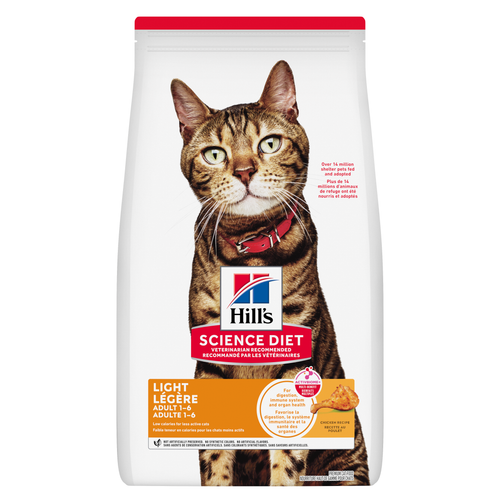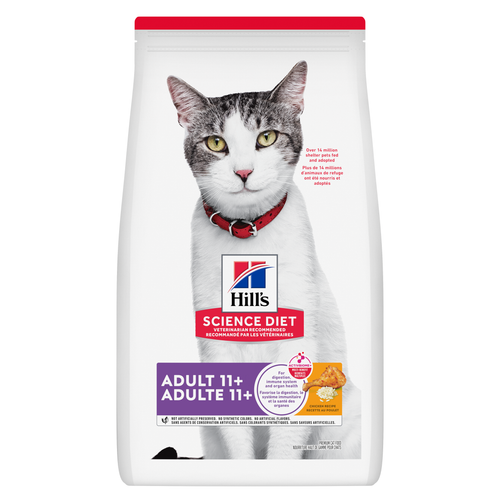
-
Find the right food for your petTake this quiz to see which food may be the best for your furry friend.Find the right food for your petTake this quiz to see which food may be the best for your furry friend.Featured products
 Adult Healthy Mobility Small Bites Chicken Meal, Barley & Brown Rice Recipe Dog Food
Adult Healthy Mobility Small Bites Chicken Meal, Barley & Brown Rice Recipe Dog FoodAdvanced nutrition to support hip & joint health from day 1
Shop Now Adult Sensitive Stomach & Skin Small & Mini Chicken Recipe Dog Food
Adult Sensitive Stomach & Skin Small & Mini Chicken Recipe Dog FoodHill's Science Diet Sensitive Stomach & Skin Small & Mini dry dog food is tailored nutrition for Small & Mini dogs while being gentle on stomachs. Nourishes skin & promotes a lustrous coat.
Shop Now Adult Light Large Breed Chicken Meal & Barley Recipe Dog Food
Adult Light Large Breed Chicken Meal & Barley Recipe Dog Food18% lower calories vs. Science Diet Large Breed Adult
Shop NowFeatured products Adult Light Chicken Recipe Cat Food
Adult Light Chicken Recipe Cat Food20% lower calories vs. Hill's Science Diet Adult
Shop Now Adult Healthy Cuisine Seared Tuna & Carrot Medley Cat Food
Adult Healthy Cuisine Seared Tuna & Carrot Medley Cat FoodDelicious seared tuna paired with tender carrots in a mouthwatering sauce
Shop Now Adult 11+ Chicken Recipe Cat Food
Adult 11+ Chicken Recipe Cat FoodSupports brain health & beautiful fur. Helps keep immune system, heart & kidneys healthy.
Shop Now -
Dog
- Dog Tips & Articles
-
Health Category
- Weight
- Food & Environmental Sensitivities
- Urinary
- Digestive
- Joint
- Kidney
- Dental
- Cancer
-
Life Stage
- Puppy Nutrition
- Adult Nutrition
- Senior Nutrition
Cat- Cat Tips & Articles
-
Health Category
- Weight
- Skin & Food Sensitivities
- Urinary
- Digestive
- Kidney
- Dental
- Stress
- Cancer
-
Life Stage
- Kitten Nutrition
- Adult Nutrition
Featured articles Antioxidants
AntioxidantsUnderstand the importance of antioxidants in your dog or cat's food, and how they can help protect your pet and keep them healthy.
Read More Water
WaterDiscover why water is the most important nutrient for your dog or cat to live a healthy life. Find out how much water your pet should consume each day.
Read More Importance of DHA in your Pet's Food
Importance of DHA in your Pet's FoodLearn about DHA, Docosahexaenoic Acid, a natural omega-3 fatty acid that is essential in the development of the brain and nervous system in cats & dogs.
Read More -


Is your cat shaking their head? Is there debris in their ear? Is one or both of their ears red and smelly? Your cat might have an ear infection. Here's everything you need to know about the condition.
Cat Ear Infections: Where Do They Happen?
While humans usually develop infections in the middle or inner ear, outer ear infections are more common in cats. This type of infection affects the pinna — the external part of the ear — and the part of the ear canal outside of the eardrum. In some cases, outer ear infections can cause a perforation of the eardrum and lead to problems in the inner and middle parts of the ear.
Veterinarians classify a cat ear infection by the type of infection that causes it. Cat ears can be infested with yeast, bacteria, ear mites or a combination of all three.
Cat Ear Infection Causes
Ear mites are common mites that live on the surface of pets' ears, including those of cats, dogs and ferrets, says the Companion Animal Parasite Council. Ear mites are very contagious and spread through direct contact. Fortunately, people can't contract ear mites. Because ear mites are so contagious, they're a bigger problem when multiple cats live together in tight quarters, like in a shelter.
While ear mites are generally the main culprit of a kitten ear infection, yeast and bacterial infections are usually seen in older cats. Yeast and bacterial infections in kittens tend to only be secondary to an ear mite infestation.
Ear infections due to yeast or bacteria can develop secondary to an ear mite infestation, or can develop due to allergies. It's normal for small amounts of yeast and bacteria to live in the ear canal, but if something puts the ear out of balance, like ear mites, polyps or allergies, then a secondary bacterial or fungal infection can occur.

Signs of a Cat Ear Infection
Cats normally keep their ears very clean. A normal, healthy cat ear is pink or pigmented, has very little debris and doesn't have an odor. An infected ear looks very different. If your cat is suffering from an ear infection, you may notice any or all of the following:
- Excessive scratching at the ears or shaking of the head
- Lowered ears when they're usually upright
- Ear redness or scratches on the ear
- Ear discharge that's black, dark brown, white, yellow or green
- Odor from the ear
- Head shyness or irritability when you go to pet the ears
Diagnosing a Cat Ear Infection
Your vet will use a combination of physical exam findings and lab exams to determine whether your cat has an ear infection. They'll likely look inside your cat's ear with an otoscope and use a cotton swab to take a sample from your cat's ear. They'll then recommend treatment based on what they find.


Tasty Tips
Ear Infection Treatments
Treatment of an ear infection depends on the specific type of infection your cat has. Unless the eardrum is perforated, a thorough cleaning is usually recommended. This serves to remove debris, which can impede a medicine's efficacy, and removes live ear mites and mite eggs. If your cat isn't cooperative, your vet may recommend sedating your cat, so they can get the ear canal squeaky clean. You may be sent home with a cleaner to clean your cat's ears at home. If you are, be sure to ask the veterinary staff to demonstrate how to clean your pet's ears yourself.
If your cat has ear mites, your vet may be able to put a single dose of medicine in your cat's ears that will clear up the infestation. If your cat has a yeast or bacterial infection, your vet will either prescribe a single dose of medicine or will send you home with medicine. Always give your cat all medication as prescribed. Don't stop treating their ear when it starts to clear up. If you don't finish the medicine completely, the infection could return. Your veterinarian will likely request a follow-up visit to ensure the infection has completely cleared up.
A cat ear infection should be treated as a serious medical condition. Never leave one untreated. If left untreated, it can lead to permanent hearing loss and balance problems. Untreated ear mites spread fast and can infect many other animals. Furthermore, ear infections are painful and can make your cat miserable.
How to Prevent a Cat Ear Infection
To help prevent your cat from getting an ear infection, keep them away from stray cats, who are more likely to have ear mites. If your cat has any underlying food or environmental allergies, work with your veterinarian to address and treat those early to prevent yeast or bacterial infections.


Dr. Sarah Wooten graduated from UC Davis School of Veterinary Medicine in 2002. A member of the American Society of Veterinary Journalists, Dr. Wooten divides her professional time between small animal practice in Greeley, Colorado, public speaking on associate issues, leadership, and client communication, and writing. She enjoys camping with her family, skiing, SCUBA, and participating in triathlons.
Related products

Supports brain health & beautiful fur. Helps keep immune system, heart & kidneys healthy.

With delicious chunks in a decadent gravy

Delicious seared tuna paired with tender carrots in a mouthwatering sauce

20% lower calories vs. Hill's Science Diet Adult
Related articles

When you adopt a cat, you don't just gain a best friend; you also save her life. Here's why getting a cat from a local animal shelter makes so much sense.

Discover the benefits of Hill's line of kitten foods and how they provide complete and balance nutrition for growing kittens.

Cats are naturally very clean and chances are your kitten will already have learned how to use the litter box from her mother before she comes to live with you.

Discover how to train your cat, starting with very basic first steps that both reward good behavior and discourage the bad.

Put your cat on a diet without them knowing
Our low calorie formula helps you control your cat's weight. It's packed with high-quality protein for building lean muscles, and made with purposeful ingredients for a flavorful, nutritious meal. Clinically proven antioxidants, Vitamin C+E, help promote a healthy immune system.
Put your cat on a diet without them knowing
Our low calorie formula helps you control your cat's weight. It's packed with high-quality protein for building lean muscles, and made with purposeful ingredients for a flavorful, nutritious meal. Clinically proven antioxidants, Vitamin C+E, help promote a healthy immune system.

